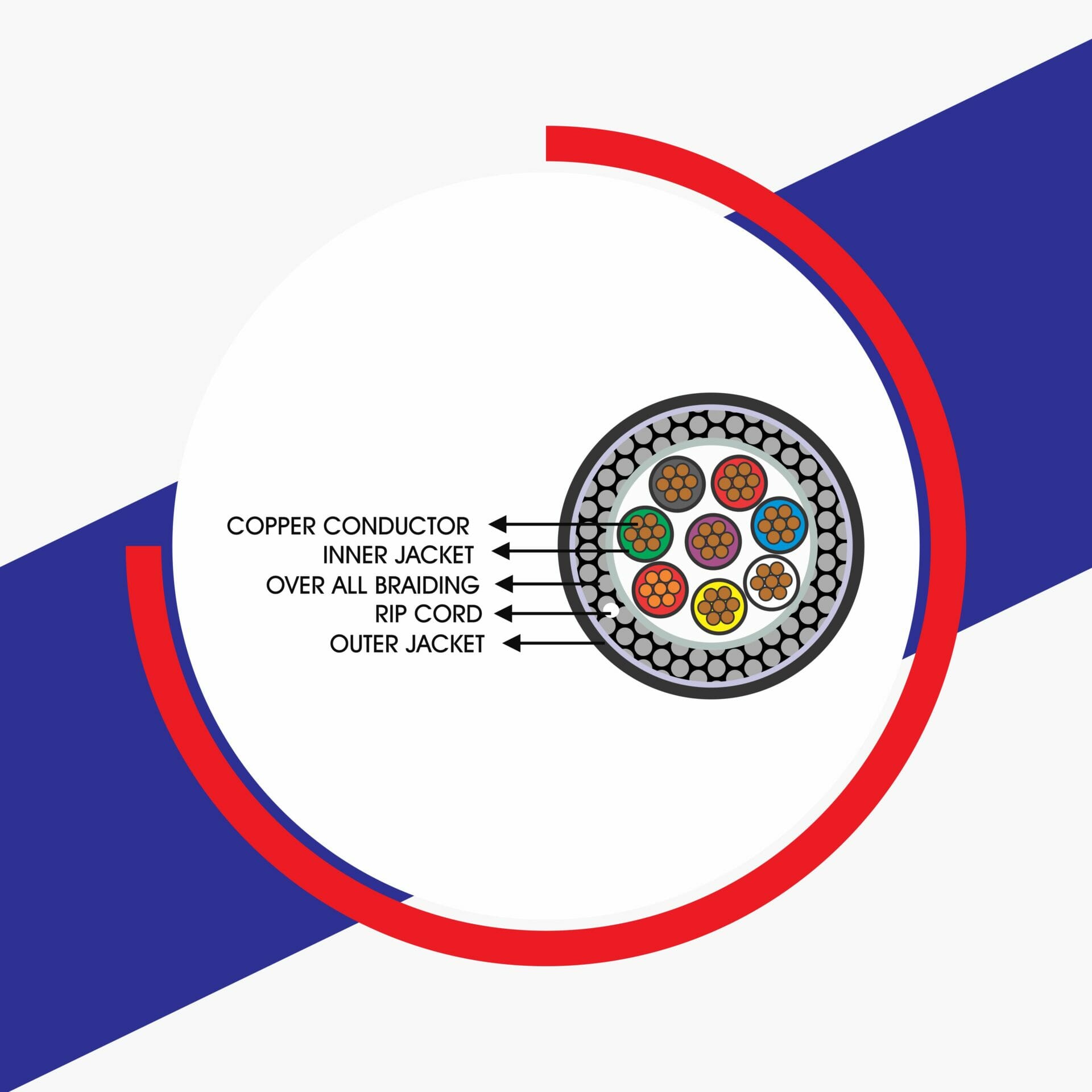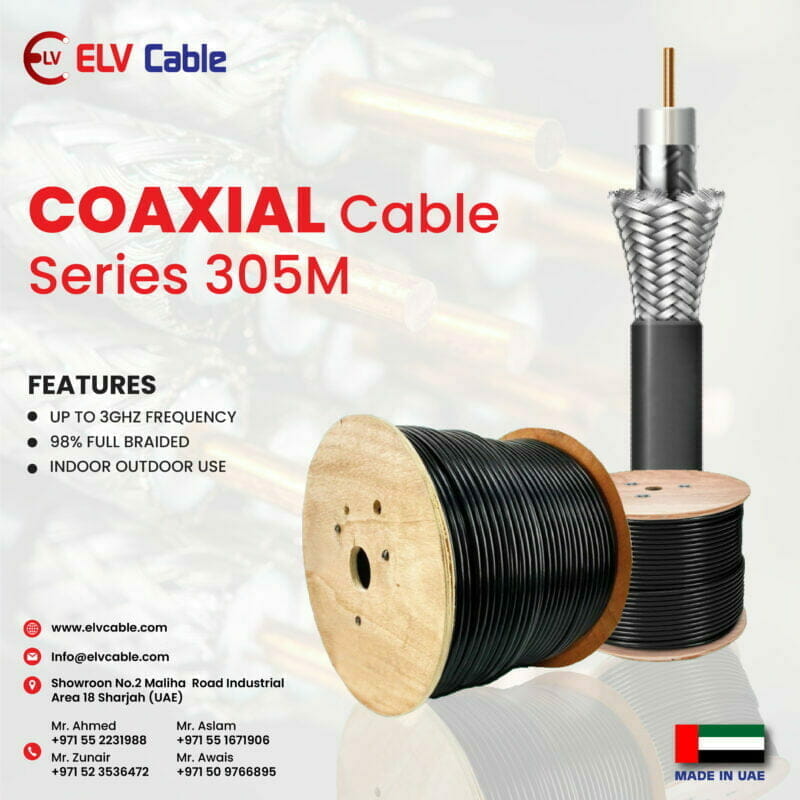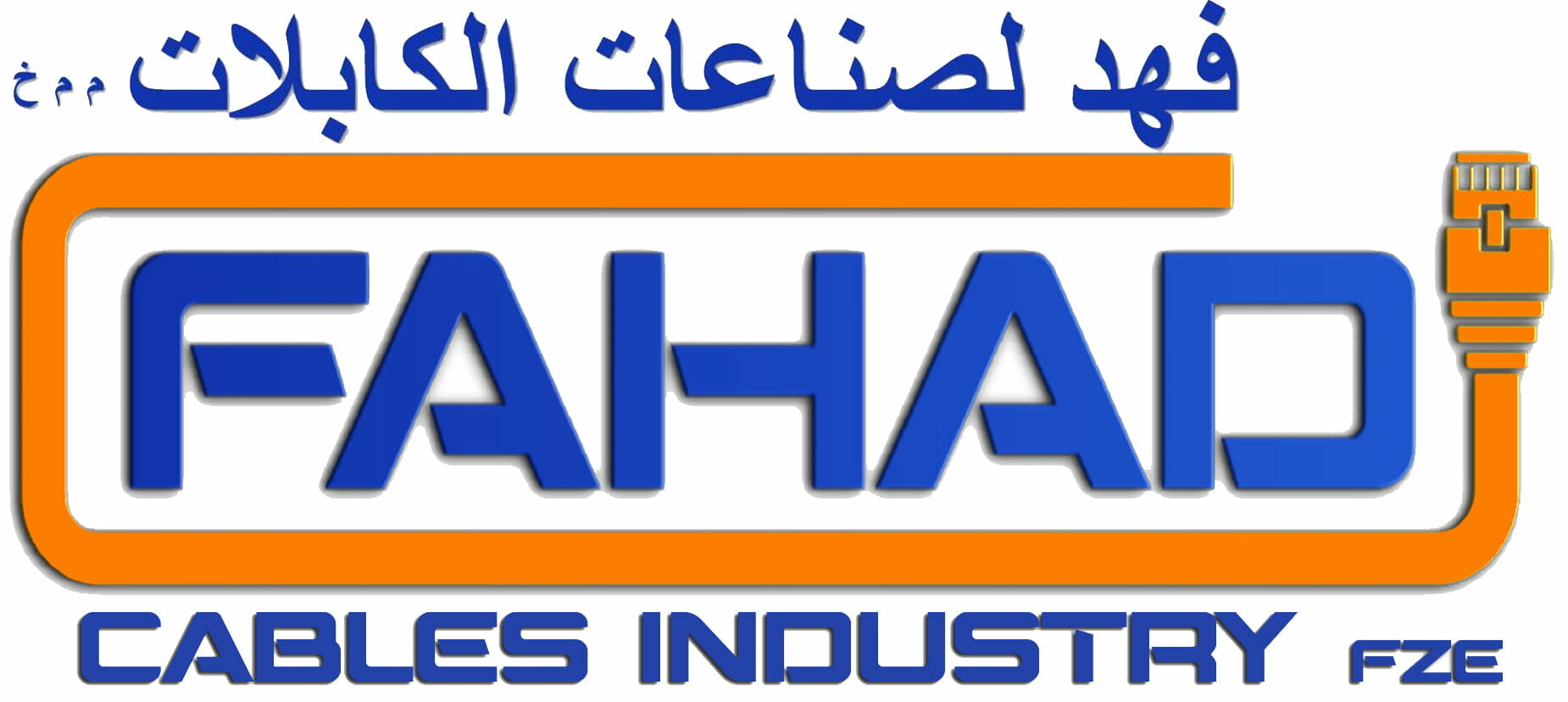Exploring Alarm Cables: Core Configurations by Fahad Cables Industry
Introduction to Alarm Cables
Alarm cables are specialized electrical conductors designed to connect various components within security systems. Their primary purpose is to facilitate communication between alarm devices, such as sensors, detectors, and alarm panels, thereby enhancing the overall efficiency and reliability of security implementations. These cables are integral to effective security measures, ensuring that signals related to safety and alarm notifications are transmitted promptly and accurately.
The significance of alarm cables becomes particularly apparent in the context of modern security systems, where a myriad of devices—including motion detectors, smoke alarms, and CCTV cameras—are integrated to provide comprehensive protection. High-quality alarm cables are essential for optimizing this intricate network, as they influence the performance and response time of the entire system. Any delay or failure in communication due to substandard cables can lead to vulnerabilities in security, making the choice of the right alarm cables a critical aspect of system design.
In addition to their functional attributes, alarm cables are designed to withstand various environmental challenges. Factors such as electromagnetic interference (EMI), temperature variations, and physical wear and tear demand that such cables be robust and resilient. Manufacturers like Fahad Cables Industry prioritize these requirements by offering cables that not only fulfill technical specifications but also meet industry standards to ensure safety and longevity.
As we delve deeper into the subject of alarm cables, it is vital to explore the different core configurations available. These configurations greatly impact the overall effectiveness of the alarm systems they serve, addressing specific needs and performance criteria based on the installation environment. Understanding the nuances of alarm cable configurations will empower users to make informed choices that enhance their security infrastructure.
Understanding Core Configurations
In the realm of alarm cables, core configurations play an integral role in optimizing signal transmission and enhancing the overall efficiency of alarm systems. The term ‘core’ refers to the conductive elements within a cable that facilitate the movement of electrical signals. Typically, these cores are made from copper or aluminum, both of which are effective in transmitting signals with minimal resistance. The arrangement and number of cores in a cable can greatly influence its performance in various applications.
Core configurations can vary widely, with options including single, double, and multi-core arrangements. A single-core cable is straightforward and often used in applications that require direct connection without the need for additional signal paths. In contrast, multi-core cables provide the advantage of multiple pathways for signals, which is particularly crucial in complex alarm systems. This configuration not only supports enhanced signal integrity but also allows for redundancy; in the event that one core fails, others can continue to transmit data, thus maintaining system integrity.
The choice of core configuration is determined by several factors, including the specific application requirements, distance of signal transmission, and environmental considerations. For instance, a simplified core configuration may be adequate for small, indoor security setups, whereas a multi-core configuration would be essential for larger installations, such as perimeter alarms or integrated security systems that cover extensive areas.
Moreover, signal integrity is critically affected by the configuration of the cores. Properly designed core arrangements reduce crosstalk and interference, ensuring that the alarm signals remain clear and reliable. As such, understanding the core configurations used in alarm cables is paramount for professionals involved in designing, installing, or maintaining security systems.
Fahad Cables Industry: An Overview
Fahad Cables Industry has established itself as a prominent player in the cable manufacturing sector, particularly known for its range of alarm cables. Founded in [insert founding year], the company has consistently demonstrated a commitment to producing high-quality products tailored to meet the evolving demands of the electrical and telecommunications industries. Over the years, Fahad Cables has developed a diverse product portfolio that includes not only alarm cables but also various types of wires and cables designed for multiple applications.
The company’s mission revolves around delivering superior cable solutions that prioritize safety, reliability, and durability. By employing advanced manufacturing techniques and strict quality control measures, Fahad Cables ensures that each product not only meets industry standards but also exceeds customer expectations. Their expert team continuously seeks innovative approaches to enhance product performance, showcasing the organization’s dedication to remaining at the forefront of technological advancements in cable manufacturing.
Fahad Cables Industry prides itself on its reputation for exceptional customer service. Understanding that customer satisfaction is paramount, the company has fostered strong relationships with its clients through timely delivery, comprehensive technical support, and tailored solutions that address specific project requirements. This customer-centric approach has earned Fahad Cables a loyal client base and numerous accolades within the industry.
Moreover, Fahad Cables maintains a focus on sustainable practices, recognizing the importance of environmental responsibility in manufacturing. Through the integration of eco-friendly materials and processes, the company not only adheres to regulatory requirements but also demonstrates its commitment to a sustainable future.
In conclusion, Fahad Cables Industry stands out as a leader in the alarm cable market, reflecting its dedication to quality, innovation, and exemplary customer service. With a solid foundation and forward-thinking vision, the company is well-equipped to navigate the challenges of the industry and continue providing exceptional cable solutions.
Types of Core Configurations Offered by Fahad Cables
Fahad Cables Industry prides itself on its diverse range of core configurations designed to meet varying industrial needs. These configurations are pivotal in enhancing the efficiency and safety of alarm systems across numerous applications. Here, we explore the primary types of core configurations offered by the company, including their specific attributes and applications.
The first type we examine is the twisted pair configuration, which consists of two insulated copper wires twisted together. This design is particularly effective at minimizing electromagnetic interference, making it ideal for low-voltage alarm systems where signal clarity is paramount. Twisted pair configurations are often employed in fire alarm systems and security alarms, ensuring seamless communication between components.
Next, we have multi-core configurations, which feature multiple conductor wires housed within a single cable. Fahad Cables offers various arrangements, including star-quad and circular configurations. The star-quad layout, with its distinct arrangement of four twisted pairs, excels in applications requiring resilience against interference, such as in advanced surveillance systems. Circular multi-core cables are versatile and commonly used in both residential and commercial alarm systems, offering flexibility in applications where routing is a critical factor.
Fahad Cables Industry also produces a range of armored core configurations that provide additional protection against environmental hazards. These cables usually incorporate a protective metal shield, thus ensuring that the internal conductors are safeguarded against physical damage, chemical exposure, and moisture. Such configurations are particularly beneficial in outdoor settings or industrial environments where robustness is a necessity.
Finally, specialized core designs, such as fire-resistant cables, are available for use in life safety systems. These cables can withstand high temperatures and are crucial for alarm systems in buildings equipped for emergency evacuation protocols.
By offering these diverse core configurations, Fahad Cables Industry provides clients with tailored solutions that meet specific industry standards and application requirements, ensuring that the highest levels of safety and reliability are maintained.
Advantages of Different Core Configurations
The choice of core configuration in alarm cables plays a pivotal role in the effectiveness and reliability of alarm systems. Different core configurations, such as single-core, multi-core, and twisted pair, each offer unique advantages that cater to specific installation needs. One of the primary benefits of using multiple cores is enhanced signal transmission. This configuration allows for better bandwidth and improved signal clarity, which is essential for ensuring accurate monitoring and fast response times in alarm systems.
Another vital advantage is the reduced interference provided by twisted pair configurations. The twisting of the conductors helps to cancel out electromagnetic interference (EMI) which can affect the performance of alarm systems. This is particularly important in environments where electrical noise is prevalent, as it ensures that the signal remains unaffected, thereby enhancing the overall functionality and reliability of the alarm system.
Moreover, different core configurations can significantly improve the overall reliability of alarm systems. Multi-core configurations often allow for redundancy; if one core fails, others can still maintain functionality. This builds resilience into the system design, which is critical for security applications where consistent performance is expected at all times. Additionally, choosing the right core configuration is dependent on specific installation conditions, such as the distance of wiring runs and the environment in which the cable will be deployed. For longer distances, for example, configurations that minimize attenuation become essential.
In conclusion, understanding the advantages of various core configurations helps in making informed decisions regarding the installation of alarm systems. By evaluating factors like enhanced signal transmission, reduced interference, and increased reliability, users can optimize their alarm systems for superior performance and stability.
Applications of Alarm Cables in Security Systems
Alarm cables play a crucial role in modern security systems, ensuring the reliable transmission of signals for various safety applications. They are specifically designed to support the functionality of fire alarms, burglar alarms, access control systems, as well as integrated security solutions. The effectiveness of these systems largely depends on the proper selection of alarm cable configurations tailored to the unique requirements of each application.
For instance, in fire alarm systems, alarm cables are essential for connecting detectors, panels, and alarm devices. These cables are often rated for high temperatures and are typically designed to limit the spread of flames, ensuring uninterrupted operation during emergencies. An optimal cable configuration for fire alarm applications is necessary to maintain continuous system integrity and reliability.
Burglar alarms also require specialized alarm cables to facilitate seamless communication between sensors and control panels. The correct choice of cable can impact the overall responsiveness of the security system, as it must transmit signals efficiently without degradation. In this context, a well-designed installation, leveraging quality alarm cables, enhances the overall performance of burglar alarms.
Access control systems, which regulate entry to secure areas, increasingly rely on alarm cables to connect keypads, card readers, and locking mechanisms. Using the right alarm cable configuration is vital to ensure the timely and secure transmission of signals that govern access permissions. Integrated security solutions encompass multiple systems working together, further necessitating businesses to select alarm cables that can handle varied signal types and volumes effectively.
Ultimately, the importance of choosing the appropriate alarm cable configurations cannot be overstated. It directly influences the reliability, efficiency, and responsiveness of security systems, which are paramount in protecting assets and ensuring safety in today’s complex environments.
Installation Considerations for Alarm Cables
Installing alarm cables, particularly those with diverse core configurations, requires a careful approach to ensure both functionality and reliability. The initial step is to assess the cable routing, as the path chosen for the installation significantly influences performance. It is crucial to minimize sharp bends and avoid interference from other electrical systems to maintain the integrity of the alarm signal.
Environmental conditions play a vital role in the installation of alarm cables. Relevant factors such as moisture, temperature fluctuations, and exposure to chemicals must be evaluated prior to installation. Utilizing cables specifically designed for harsh environments can prevent degradation over time, leading to consistent performance. For outdoor installations, consider using cables with a UV-resistant jacket to protect against solar exposure, enhancing their longevity.
The lengths of runs are another important consideration when installing alarm cables. It is advisable to keep cable lengths as short as permissible to reduce signal loss. Longer runs may necessitate thicker gauge wires to maintain optimal performance over extended distance. Regularly checking manufacturers’ specifications regarding maximum allowable lengths for different core configurations will aid in achieving an effective installation.
Adherence to best practices is essential for ensuring that alarm systems operate seamlessly. Utilize cable ties or clips to secure cables along walls or ceilings, preventing any strain on the connections. Additionally, marking cable pathways can facilitate future maintenance and troubleshooting efforts. Grounding the alarm cable system properly is equally important to mitigate the risk of electrical interference, which may compromise the functionality of alarm systems.
By considering these essential aspects during installation, one can significantly enhance the performance and reliability of alarm systems. A thorough understanding of routing, environmental factors, lengths of runs, and best practices will ensure that the chosen alarm cable configuration meets the intended security needs efficiently.
Quality Standards and Certifications
Fahad Cables Industry places a high emphasis on quality standards and certifications in the manufacturing of alarm cables. This commitment ensures that their products meet or exceed industry expectations for safety, performance, and reliability. One primary certification that Fahad Cables Industry adheres to is the International Organization for Standardization (ISO) certification. Achieving ISO certification indicates that the company has implemented a comprehensive quality management system, which spans all areas of production, ensuring consistency and excellence in every batch of alarm cables produced.
In addition to ISO certification, Fahad Cables Industry complies with national and international electrical standards. These standards set essential benchmarks for electrical safety, functionality, and environmental impact. Compliance with these regulations not only underscores the company’s dedication to quality but also builds trust among consumers who rely on alarm cables for critical applications. Meeting such standards often involves rigorous testing processes, including evaluations of electrical performance, mechanical durability, and resistance to environmental factors.
The testing processes employed by Fahad Cables Industry play a crucial role in validating the integrity of their alarm cables. Each batch of cables undergoes extensive examination to ensure they adhere to the required electrical parameters and safety functions. This includes assessments for insulation resistance, voltage drop, and fire ratings, among others. Such thorough testing confirms that the alarm cables are capable of performing effectively in various applications without posing risks to safety.
By adhering to recognized quality standards and certifications, Fahad Cables Industry not only reinforces its reputation as a reliable manufacturer but also ensures that end users can trust the performance and safety of their alarm cables. This dedication to quality assurance ultimately positions the company as a leader in the market, committed to delivering exceptional products that meet the highest industry benchmarks.
Conclusion and Future Trends
Throughout this blog post, we have explored various aspects of alarm cables, emphasizing their core configurations and the essential role they play in alarm systems. The technological advancements in alarm cable materials, designs, and applications have revolutionized the way security systems are implemented. This evolution is critical, as the demand for efficiency and reliability in comprehensive security measures continues to rise.
The future of alarm cable technology looks promising, with emerging trends focusing on enhanced durability and flexibility. Innovations in material science are likely to produce cables that can withstand various environmental challenges, thus optimizing their longevity and performance. Manufacturers, such as Fahad Cables Industry, are exploring new composite materials that can improve the resilience of alarm cables against external threats, including environmental factors and electromagnetic interference.
Furthermore, smart integration is becoming a pivotal focus in the development of alarm systems. The incorporation of IoT (Internet of Things) technologies into alarm systems not only allows for real-time monitoring but also facilitates remote management capabilities. As alarm cables evolve to accommodate these advanced features, we can expect them to support higher data transmission rates and enhanced signaling capabilities. This advancement will ensure that alarm systems remain robust and responsive to security breaches.
Overall, as security systems become increasingly integrated into smart buildings and automated environments, the role of alarm cables will continue to expand. Manufacturers are likely to adapt their offerings to meet these evolving needs, reinforcing the importance of robust and reliable alarm cable solutions. The trends we observe today signify a future where alarm cables will not only play a fundamental role in security but will also be at the forefront of technological advancements in alarm systems.






